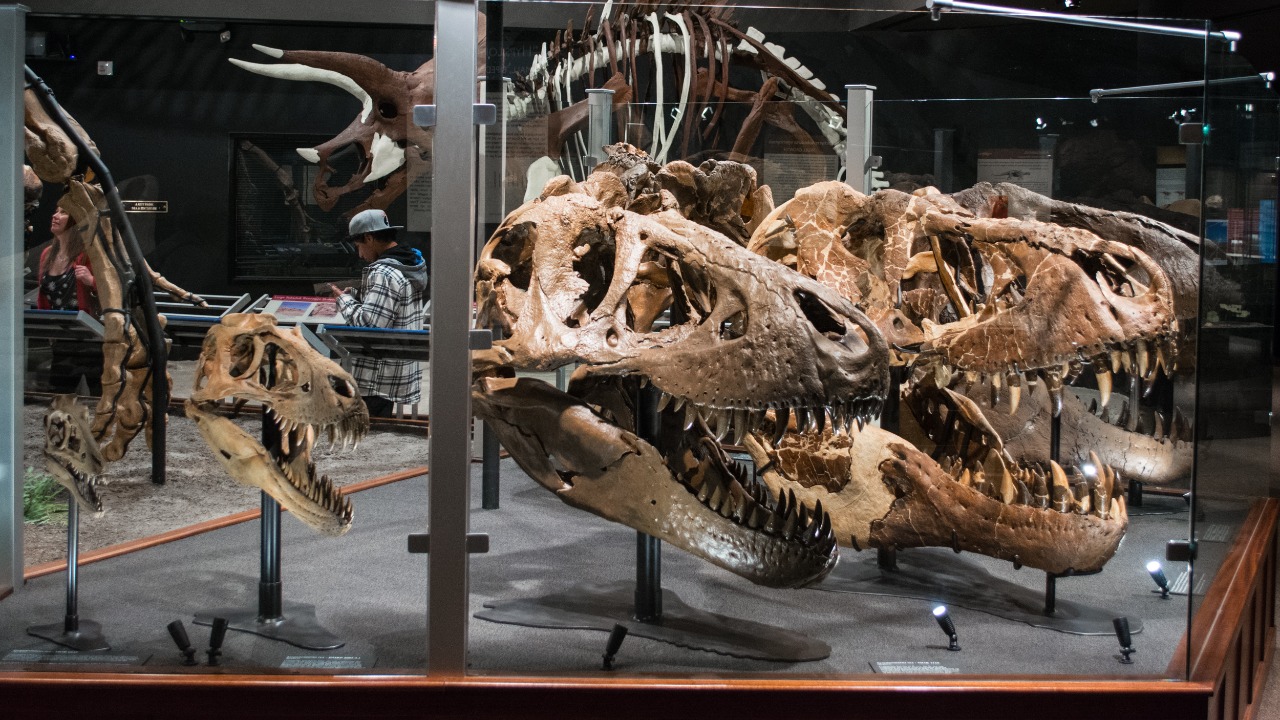
A groundbreaking fossil discovery in North Carolina has put to rest a long-standing debate among paleontologists. The find confirms the existence of a distinct dinosaur species, resolving the question of whether certain specimens were juvenile Tyrannosaurus rex or a separate entity, such as Nanotyrannus. This revelation, further analyzed by researchers at Stony Brook University, redefines the evolutionary narrative of T. rex, establishing clear distinctions in growth patterns and anatomy. The resolution provides definitive evidence against the juvenile hypothesis, reshaping our understanding of tyrannosaurid diversity.
The Origins of the T. rex Debate
The debate over the existence of Nanotyrannus as a separate species began in the 1960s, spurred by early fossil evidence that raised questions about its relationship to the adult T. rex. However, analyses in the 1980s and 1990s began to challenge the validity of Nanotyrannus, suggesting that the specimens were immature T. rex. This interpretation was based on foundational paleontological studies that examined the growth patterns and anatomical features of the specimens.
The contention continued into the 21st century, with a 2024 study reigniting the debate by questioning the interpretation of these specimens as juvenile T. rex. This ongoing dispute underscored the need for further research and more definitive evidence.
Key Fossil Specimens in Question
The primary Nanotyrannus holotype fossil from the Late Cretaceous Hell Creek Formation was notable for its smaller size and more slender build compared to T. rex. Additional specimens exhibited preserved juvenile features such as longer arms and finer skull proportions, which fueled the hypothesis that these were not separate species but growth stages of T. rex.
However, a recent examination of these fossils by North Carolina paleontologists on October 30, 2025, confirmed distinct species traits, providing compelling evidence for the existence of Nanotyrannus as a separate entity.
The Role of Growth and Anatomy Analysis
Key to this resolution were histological studies revealing bone growth rings that differentiated Nanotyrannus maturity from T. rex juveniles, supporting separate ontogeny. Morphometric comparisons of skull and limb ratios showed that Nanotyrannus did not scale up to T. rex proportions, further bolstering the case for its distinct species status.
The new dinosaur discovery had a significant impact on the debate over young T. rex origins, providing compelling evidence that challenged the prevailing growth-stage hypothesis.
Stony Brook University’s Breakthrough Analysis
On November 4, 2025, researchers at Stony Brook University reexamined the fossil data using advanced imaging techniques. This allowed them to identify unique osteological features in the specimens, providing further evidence for the distinctiveness of Nanotyrannus.
Their analysis rewrote the evolutionary narrative of T. rex, affirming Nanotyrannus as a valid genus with its own lineage. The contributions from Stony Brook researchers were instrumental in resolving the anatomical discrepancies that had fueled the debate.
Implications for Tyrannosaurid Evolution
The confirmation of Nanotyrannus as a separate species expands our understanding of tyrannosaurid diversity in the Late Cretaceous period, necessitating a revision of family tree reconstructions. It also suggests that Nanotyrannus may have filled a mid-sized predator niche, separate from the apex status of T. rex.
The broader impacts on dinosaur paleontology are significant. As highlighted in the November 8, 2025 coverage, this stunning discovery ends the decades-old debate, reshaping our understanding of dinosaur evolution.
Future Research Directions
Looking ahead, the hunt for more Nanotyrannus fossils will continue, with the aim of further validating growth trajectories and behaviors. Comparative studies with other tyrannosaurids will also be crucial to contextualize this resolution within the broader picture of global dinosaur evolution.
North Carolina, having played a pivotal role in this discovery, is poised to be a key player in future collaborations. The state’s paleontologists have already made a significant contribution to the field with their October 30, 2025 confirmation of distinct dinosaur species, and their ongoing research promises to yield further insights into the fascinating world of dinosaurs.
More from MorningOverview